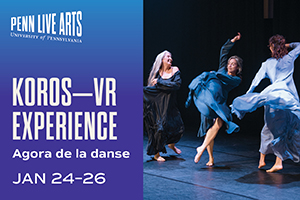
Taking Back the Forgotton Female
By: Whitney Weinstein
Performer Kailey McCrudden lay face down on the floor, in the middle of the space. Though I noticed her, as I observed many others did, she quickly slipped from my awareness. Who is this faceless figure that nobody stops to regard? She is overlooked by people desensitized to the tragedies of this world, too busy to care. Megan Mizanty’s interests lie in the forgotten body, where an intricate personality once thrived and now serves only as an easily dismissed prop.
The 45 minute showing of Cherry Pop Pie (and other American Tales) incorporated layering of soundscape, live voices, and contact movement. Having worked with Mizanty a little over 5 years ago, I was thrilled to see her continued integration of voice into her work. I don’t often experience such a unique skill of balancing sound and dance. Her subject matters are complemented with the use of sound. When I worked with her in a piece about gossip, whispers and over-exaggerated exclamations were particularly relevant. In Cherry Pop Pie, Mizanty explores the voices of voiceless persons. We spoke a few days before her show in June at The Iron Factory.
Whitney Weinstein: Tell me about your company and how this particular work came to fruition.
Megan Mizanty: MizantyMoves Dance is a collaborative ensemble of dancers and singers, formed in 2014, currently comprised of four New York based, female artists. Cherry Pop Pie was inspired by the depictions of young women in crime dramas. I am interested in the normalization of “the Disposable Woman.”
WW: Who is “the Disposable Woman” and what does she represent?
MM: She is the dead character usually discovered in the first five minutes of a show or film. She is the beginning of a narrative. She is someone we've all seen in TV or film: young and full of potential.
Performers clumped together on a couch, whispering Netflix recommendations.
WW: What made you feel like this idea was worth exploring?
MM: I became interested in all of the similarities between [late-night crime] shows, such as the victim[ized bodies] being the central focal point, briefly, then the gaze inevitably shifting towards whodunit. I wanted to know more about the women: When was the last time they had an orgasm? Do they prefer coffee to tea? Did they have any pent-up secrets before their fictional demise? What was their favorite show on Netflix? This dance gives a literal voice to these women, who talk, sing, and move throughout the entirety of Cherry Pop Pie.
The dancers spoke in rapid turn: She used to be so pale. She plays the ukulele. She once had a pet squirrel. She loves popcorn. She is terrified of heights.
WW: Are you saying our focus should stay on the victim pre-death, rather than the corpse and whodunit aspect?
MM: Yes. She relates to the complexities of an actual, real woman, but in your typical crime show, she is never given the voice or space to be fully explored as a multidimensional, flawed, funny human with opinions, regrets, and memories. Our dance challenges that. Our dancers and their personalities are significant to shaping the work. We've been using their stories, vocal abilities, and dynamics with one another to shape the trajectory of the dance. They are all very different movers and complement one another with their characteristics: loud, shy, sweet, goofy, snarky.
They engaged in improvisations, harmonized voices, and synchronized movement with their sounds.
WW: Tell me more about the involvement of voice: was that part of the original vision or did it develop as an element? What does it offer to the dance that movement cannot?
MM: Women share stories that inevitably and collectively include moments of danger. By that I mean moments when they feel unsafe walking home, on the subway or commuting alone. These discussions evolved into a larger conversation about taking up space, having a voice, and defending oneself. I don't know any woman who hasn't felt unsafe in some public capacity, so coupling that with crime drama in American media with the use of live voice was a quick and intriguing jumping off point.
WW: How did you work to create the dance, given that you integrated the personal narratives of your dancers?
MM: We rarely used recorded sound in rehearsal. We often talk, sing, and make sound while moving. Both dynamics (movement and sound) influence one another. I've taken a lot of ideas from observing the four women talk with one another casually. I asked myself, “What is important to women in their twenties in New York now? How does the rhythm of that conversation inform the way they are in contact with one another? What are their shared experiences of watching TV with women as ‘Jane Does’ and what are their experiences of feeling in danger?” I also studied similarities of dialogue and depictions of victims in popular crime dramas. We primarily focused on Law and Order, Twin Peaks, and The Killing. How are post-mortem women talked about? When it's only clinically, what is lost?
WW: Why is the use of voice so important?
MM: I’ve been working with singers as collaborators for the past five years. The role of live voice feels especially relevant and vital in this dance because it pushes against women as objects, more specifically as objects to be examined as evidence. In most dramas we watch and learn about the victim through the eyes of the detectives, neighbors, and family. This provides an alternate perspective that satirizes the tropes we find in crime dramas, while also aiming to cast a more nuanced light on the women. Their stories should be told and are just as fascinating as the whodunit structure.
In the end, the dancers stand united, holding hands, reciting female names, reinstating identity to lifeless bodies and forgotten personalities.
MizantyMoves Dance, Cherry Pop Pie (and other American Tales), The Iron Factory, June 22.
By Whitney Weinstein
October 16, 2018






.png)


